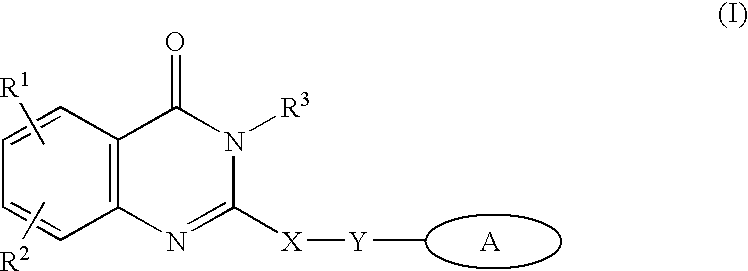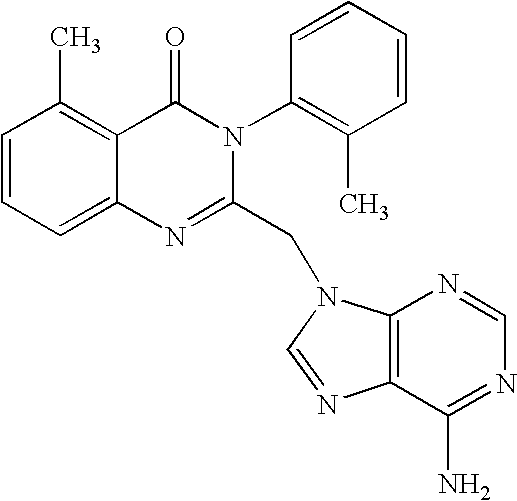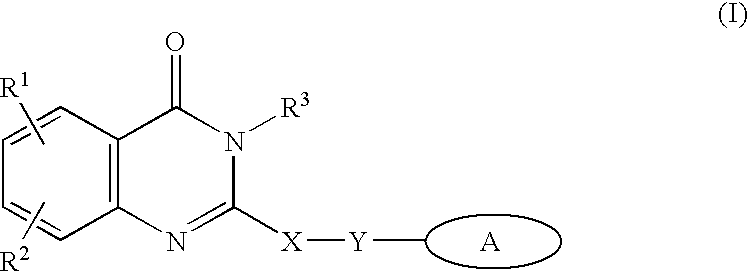Methods for treating and preventing hypertension and hypertension-related disorders
- Summary
- Abstract
- Description
- Claims
- Application Information
AI Technical Summary
Benefits of technology
Problems solved by technology
Method used
Image
Examples
example 1
Preparation of a Hypertensive Animal Model and Evidence that PI-3-K Plays a Role in Arterial Spontaneous Tone
[0180] Previous studies examining alterations in PI-3-kinase-mediated spontaneous tone used the aorta as the vessel of choice (Northcott, et al., (2002) Circ Res. 91: 360-369). The aorta is a conduit artery and has been found to play at least a small role in the maintenance of blood pressure, due to changes in compliance in the aorta during the condition of hypertension (Safar, et al. (1998) Hypertension 32: 156-161; Salaymeh and Banerjee (2001) Am. Heart J., 142: 549-555). The function of resistance arteries, however, is more immediately relevant to control of TPR, because small changes in the diameter of resistance arteries can lead to large changes of TPR due to their relationship (resistance, R, is proportional to 1 / r4). A series of experiments were therefore designed to determine if PI-3-kinase participates in the resistance artery control.
[0181] Male Sprague Dawley ra...
example 2
Biochemical Analysis of Arterial Proteins in Hypertensive Animals
[0184] In view of the results obtained in Example 1 showing inhibition of PI-3-kinase inhibited tone development in hypertensive animals, biochemical analyses were carried out to specifically characterize the PI-3-kinase activity.
[0185] Mesenteric resistance arteries were cleaned, pooled, quick-frozen, pulverized in liquid nitrogen-cooled mortar and solubilized in lysis buffer [0.5 mol / L Tris HCl (pH 6.8), 10% SDS, 10% glycerol] with protease inhibitors (0.5 mmol / L PMSF, 10 μg / ml aprotinin and 10 pg / ml leupeptin). Homogenates were centrifuged (11,000 g for 15 min, 4° C.) and supernatant total protein measured. Equivalent amounts of mesenteric resistance arterial protein from sham and DOCA-salt rats were separated on 7% SDS-polyacrylamide gels and transferred to Immobilon-P membrane for standard western analyses using anti-p85α (1:100; Upstate Biotechnology, Lake Placid, N.Y.), anti-p110δ (1:1000; Santa Cruz Biotechno...
example 3
Immunohistochemical Analysis of Hypertensive Arteries
[0187] To further characterize the unexpected expression of p110δ protein in vascular tissue, immunohistochemical studies were carried out to determine if p110δ expression occurred specifically in aortic vascular smooth muscle cells (VSMCs).
[0188] Immunohistochemistry revealed p110δ specific staining in the smooth muscle cell region in the aortae of both the sham and DOCA-salt rats (n=4) (see arrows in FIG. 3A). FIG. 3A shows representative images from immunohistochemical studies of thoracic aortae (RA) from hypertensive DOCA-salt and normotensive sham rats 8 μm sections of aorta were probed with no primary antibody (top left and bottom left) or 1 μg / ml of p110δ antibody (top right and bottom right). The arrows indicate the staining in the smooth muscle cell region of the section of those with primary antibody (note those with no primary antibody have little or no staining). The aorta from the DOCA-salt rat had more intense stai...
PUM
| Property | Measurement | Unit |
|---|---|---|
| Electrical resistance | aaaaa | aaaaa |
| Contraction enthalpy | aaaaa | aaaaa |
| Chemical shift | aaaaa | aaaaa |
Abstract
Description
Claims
Application Information
 Login to View More
Login to View More - R&D
- Intellectual Property
- Life Sciences
- Materials
- Tech Scout
- Unparalleled Data Quality
- Higher Quality Content
- 60% Fewer Hallucinations
Browse by: Latest US Patents, China's latest patents, Technical Efficacy Thesaurus, Application Domain, Technology Topic, Popular Technical Reports.
© 2025 PatSnap. All rights reserved.Legal|Privacy policy|Modern Slavery Act Transparency Statement|Sitemap|About US| Contact US: help@patsnap.com



